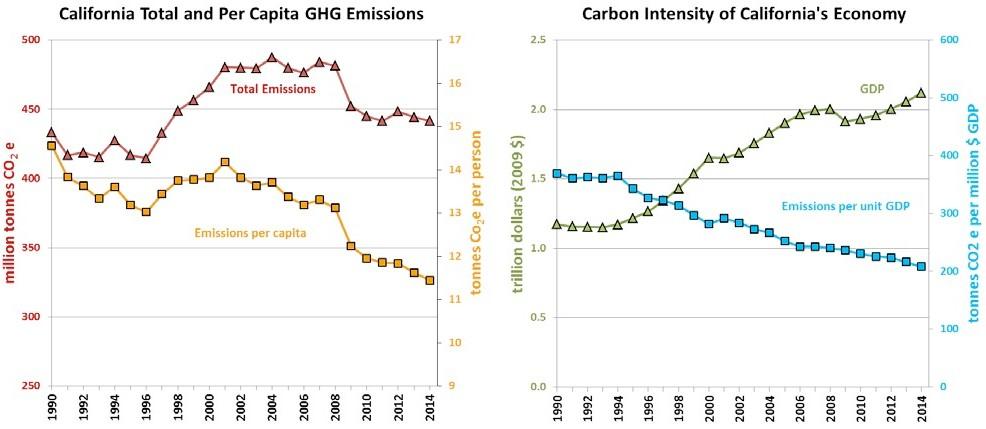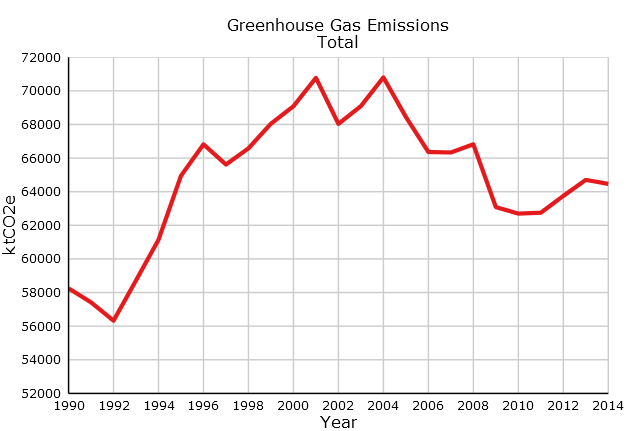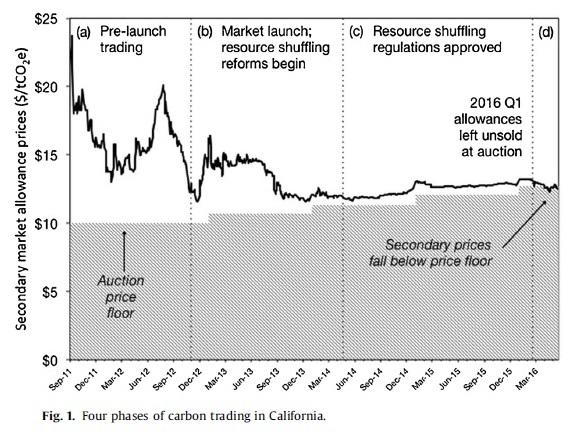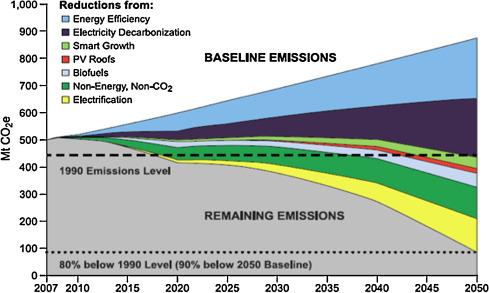Table of Contents
Introduction
The wake of industrialization of the twenty-first century has come up with some challenges that have been a bother to the whole world, from different facets. Economically, the world has benefited from industrialization. Similarly, the social life that industrialization of the twenty-first century has brought deserves a big applause. However, one of the most affected areas has been the environmental sector. The world has been in a lot of chaos resulting from the environmental effects of the century’s industrialization and industrialization process. Ranging from carbon emissions, global warming, change in climatic conditions from predictable rains to sporadic storms and severe droughts. The attention that these have brought have put agencies, governments, and business heads in attention as their rapid increase in the atmosphere has been causing increased consequences to sustainability on the planet.
Today, the main topic in global meetings remains the subject of global warming. The main issue discussed in every global event planning is the issue of environmental conservation. Similarly, every government is concerned about the regulations on global warming when it comes to new industries being set. The tension that carbon emissions have brought to the world has resulted in a global regulation of emissions that every industry is required to have. One of the most common controls is the cap-and-trade regulations which a system for controlling carbon emissions and other forms of atmospheric pollution by which an upper limit is set on the amount a given business or other organization may produce but which allows further capacity to be bought from other agencies that have not used their full allowance.
Although some of the countries have tried to abide by this regulation, others have unwillingly broken them, making it even hard to compensate the effects of the result. The purpose of this paper is to look at how effective these programs have been towards mitigating carbon emissions in the state of California, United States of America.
Objective
This paper seeks to investigate the effectiveness of cap-and-trade measures in the regulation of carbon emissions in the state of California. It will also be finding the answer on whether the program has worked independently or as a result of the complimentary approaches that have come up because of it. The research will seek to achieve its purpose by concentrating on the mitigation measures applied by different concerned bodies in reducing carbon emissions. In this study, the research will mainly focus on the mitigation measures imposed by the relevant agencies in the state of California in the United States of America, to reduce the carbon emissions. In this case, the state will act as a sample to represent the whole continent and other parts of the world concerning the issue of mitigating carbon emissions. The parties responsible for this cap-and-trade are electricity generators and fuel refiners in the United States of America.
Procedure
This is a qualitative research paper. The research is geared towards the investigation of the effectiveness of cap and trade regulations which are geared towards reducing the carbon emissions in the United States of America. Although this is an extensive topic, the paper will narrow the research to a particular subject of the mitigation measures which have been used by different bodies in an attempt to manage the menace of carbon emissions caused by industrialization in the twenty-first century.

The paper will use an in-depth approach to the subject by conducting a deep analysis of some given cases concerned with the emissions of carbon into the atmosphere. It will also include a presentation of some of the measures that have been taken using the cap and trade approach, a comparison of the effectiveness of the mitigation measures used as well as a comparison of the mitigation measures employed in the regulation and the effect of the complementary approaches towards the reduction of carbon emissions. The primary display method will be the statistical charts and graphs as they form the best way of comparing qualitative data, and are good at creating a visual appeal of the data presented. (Bennett et al., 2007)
Cap and Trade Markets
As the governments strive in an attempt to handle the issue of carbon emissions and global warming, tagging the price on carbon is becoming a common practice. In most cases, the government has devoted to using two approaches in the issue. The first approach is the use of carbon taxes, where institutions are taxed according to the amount of carbon they emit from the use of their firms and industries. The second approach is what this paper discusses, the use of carbon trading. Carbon trading is the use of limits which every given industry is allowed to emit during their processes. It has become one of the most common approaches to reducing greenhouse gas emissions, with more than twenty countries in the world adopting it.
America, specifically the North America, has been one of the most active members, with states such as Ontario, California, and others, joining some of the greenhouse gas emissions initiatives. Some of the common markets in the continent include the Western Climate Initiative and the Regional Greenhouse gas initiative (Jones et al., 2007). Initially, Ontario was the leading member of the initiatives, until 2011 when California joined the Western Climate Initiative which had been formed to support its climate regulations. Today, the joining of the program has helped the state achieve some climatic goals aiming at reducing the Greenhouse gas emissions.
The Fundamentals of Cap-and-Trade
Sometimes, it can be hard for an individual to understand what the cap-and-trade thing is all about clearly. However, it is easy to comprehend that the program revolves around the caps that the government sets on a provincial level (Hahn, 2011).These caps are mainly meant to regulate some emissions that the government allows in a particular period. Once these caps are given, they are converted to allowances which can be paid to the participants or be auctioned at the end of the specified period. This means that if the members emit a certain amount of greenhouse gases, they lose a certain amount allowances enclosed in the cap (Golder et al., 2010).The auctioning of these units allows other participants to buy them.(Percival et al.,2003)

Figure 1: How Cap-And-Trade works (Wara, 2007)
The Cap-And-Trade Program in California, USA
In 2014, California was ranked number eight in the economy and number two in the emission of greenhouse gases in the United States of America (Metcalf, 2009). Most of its emissions came from industries and electricity generating companies. This meant that it was time for the state to sit down and rethink on how it was supposed to develop its economy without causing environmental harms, resulting from its economic activities. In the same year, the government passed the environmental act which aimed at regulating the amounts of greenhouse emissions the country did in an attempt to double their economic productivity. The bill would strengthen the state’s cap and trade membership which it has joined seven years before, and in which it remains with its sister country, Quebec, up to date.
More than seven years in the cap and trade program there pops up a question of how California has benefited from being a member of the regulation. Most of the people would question on how effective the mitigation measures imposed by cap and trade regulations, have been to the environment and climate of the United States and the whole world. However, it is worth noting that the joining of the program has helped California drastically drop in the charts of top Greenhouse Gas emitting countries as its economy improves on a daily basis. (Hart, 1997)
The Effectiveness of Cap-And-Trade Mitigation measures in California
As said earlier on in this research, it is easy to note that the economy of California has been growing steadily since 2008.On the same perspective, some carbon emissions have drastically dropped since new legislations were enacted, and since the state joined the cap and trade program. A good understanding of how these measures have proved to be effective can be seen through looking at twos sides of the contributing factors. The first aspect that we can look at is from the economic perspective, while the second point is from the perspective of the emissions produced by the economic activities (Hahn et al., 2011)
Economic Analysis
One of the best things California did was to sign up for the cap and trade programs. This facilitated its fast growing economy in the United States and the entire world. The signing up to the cap and trade program benefited the state economically as analyzed in this chapter. Although it is possible to outline how effective the program was from other perspectives, the paper will concentrate on the scientific, economic benefits of the measures that came with the state joining this program.
Green Economy Development
The joining of the cap and trade of the country has significantly contributed to the growth of a green economy. The cap and trade initiative has excited the development of new initiatives which are meant to reduce carbon emissions and grow clean energy in the state. Such include the solar power initiative among others (Rodrick, 2014).As a result of these new initiatives, energy-related jobs have grown by more than 5% in the state. This represents double the growth pace compared to when the country had not joined the cap and trade (Carley et al., 2011).The trend has continued in the last ten years, with the pace of energy-related jobs growing more than ten times the speed of the general jobs in the state of California.
In the year 2006, California broke the record by receiving over twenty-one billion dollars after the Global Warming Solutions Act was signed into law. This was more than any other state in the USA.
As a result of joining the cap-and-trade initiative, California has been able to boast of over ten different initiatives which are scientifically benefiting to the country’s economy. One of the primary initiatives is that the mandates put on the acquisition and regulation of clean energy, vehicles as well as amenities. These terms contributed to changing the diversity of venture capital in the country, which remained better than the previous years when the country had not joined the cap and trade program.
Finally, the joining of cap and trade program has enabled California to grow technologically. Due to the regulations that are involved, the state has developed as a new way of producing clean energy. Today, the country has grown to be one of the biggest technological hubs, with a record of the leading new patents in the development of clean energy generators (Barton, 2007).

Figure 2: Relationship between Economy and Carbon emissions in CA (Soytas et al., 2007)
Relating California’s Emissions and economy
While it may seem hard to identify the relationship between carbon emissions and economic growth of any given country, it is also easy to assess the relationship by carefully linking the two from different perspectives. The general economic and scientific assumption is that the more the economy grows, the more carbon emissions increase. This is because the primary key indicator of economic growth is the increase of more commercial plants, which are responsible for these emissions.
However, the state of California has successfully attempted to break the link between these two variables. This explains why the emissions of the state continue to reduce while its economy grows at a fast pace. The state has successfully achieved this by developing bless carbon emitting sources of energy which can give more output economically while emitting the least amount of carbon dioxide. This approach has played a significant role in breaking the relationship between economy and
Emissions Analysis
Similarly, it is worth noting that the signing up of California into the cap and trade emission has brought an effect on the emissions of carbon dioxide into the environment. This reduction resulted from some of the regulations that the program imposes on the member countries. The effectiveness of these mitigation measures has directly positively affected several sectors. When the state joined the program, the industries and other economic contributors reduced the carbon emissions by nearly 4% in the first year.
This shows that these new measures are proof that they are environmentally friendly, compared to the previous regulations that existed before California joined the Cap-and-Trade program (Ellerman, 2003). Reports show that the reduction in emissions was as a result of the reduction of imported electricity. Reports also show that the emissions from transportation fuel remained constant but are on the verge of reducing during the second phase of the regulation timeline. (Knittel, 2014).

Figure 3: GHG Emissions trend in California between 1990 and 2014 (Georgescu et al., 2014)
Energy Efficiency Approaches to Reduce Carbon Emissions
As stated in this paper, when California joined the Cap and Trade, it actively participated in reducing the carbon emissions by shifting to Green energy. The government encouraged the use of more efficient energy sources, and this led to an inverse proportion to the growth of economy and emission of carbon into the atmosphere.
Is cap-and-Trade independently Effective?
Having assessed the above information from the case study of California, it is possible for us to ask ourselves if cap and trade are handy when it is operating on its own. This chapter will seek to answer this query by comparing how effective the program has been by itself, and how the other complementary aspects have participated in making the dream of growing economy with minimum carbon emissions come true.
The niche closed by Cap-and-Trade Alone
However we praise the complimentary of cap and trade in reducing the greenhouse gas emissions, it is worth noting that the program itself has managed to play a significant role in reducing the menace. Although the program is responsible for other approaches in clean energy, it independently played a significant role.
According to Caron et al. (2015), the cap and trade alone played a significant role in reducing the carbon emissions in the country. First, it increased the leakages that were coming from the imported electricity. The restriction on the imported electricity plays a 45% reduction of the national carbon emissions. Considering that the imported power emitted more than 25000 metric tons of carbon dioxide to the atmosphere of the state, a 45% reduction was a significant amount in dealing with the issue.
The second phase of the cap and trade is also anticipated to reduce more than 49% of the total carbon emissions in California. According to the legislation that was passed in 2015, the second phase of the cap and trade involves a restriction on transportation fuels. Due to its compact nature, it is no doubt that the whole program will play a significant role in the reduction of carbon emissions in California.

Figure 4: The History and trend of CO2 Emissions in CA (Pre-Cap to Current Phase)
From the above chart, it is worth noting that the cap and trade played a critical role in reducing the gaps in the cap. In the year 2016, the allowances of quarter one of the year were left unsold because of how much the state had tried to reduce them with their cap. This is a clear indication that the program has posed a significant impact in reducing the emissions. It is, therefore, enough to argue that the cap and trade program of California is fully functional. (Burtaw, 2016)
The Niche closed by Cap-and-Trade complimentary factors
Although it is justifiable to argue that cap and trade program has had a major impact on the reduction of emissions in the state of California, We should not forget that the complimentary factors that operate hand in hand with it, played a big role in making a dream come true. The passing of cap and trade regulations led to the discovery of alternative methods of growing economy without emitting a lot of carbon dioxide into the atmosphere. Although these developments came as a result of passing the cap and trade program, we should not forget that they are crucial when it comes to a discussion of reduced carbon emissions in the state of California.
Adopting Energy-Efficient approaches
One of the strategies that the state of California used to comply with the cap and trade regulation was the adoption of new methods of using energy. This, it did by using more energy efficient methods such as solar powered energy. The adoption of new energy approaches has helped the state grow its cap and trade compliance by reducing the emissions in a very significant manner. If we progress the trend to the next twenty-five years, we will realize that energy efficiency remains the leading factor in reducing the carbon emissions into the atmosphere.

Figure 5: Carbon emission reduction by cap and trade complimentary factors (Grueneich, 2015)
Conclusion and Discussion
To conclude, it is sufficient to argue that the cap and trade program has been effective in the state of California. This owes to the results that the country has been able to achieve since it signed into the program in 2006.Although the country’s economy continues to grow on a daily basis, the environmental consequences that the growth comes with are reducing daily. Therefore, it remains indisputable that the program has been effective in reducing the carbon emissions in the state.
Although most of us may not realize that it is because of the complementary sources of energy that the program inspired, that the carbon emissions have reduced drastically, it remains clear that the cap and trade would not have achieved the reductions required by the regulations alone.
The alternative approaches have played a big role in making the dream of the cap and trade regulations come true. Therefore, we can argue that although the program has proved to be successful, its effectiveness cannot be discussed without mentioning the alternative energy uses in the state, which has contributed to a growing economy and reduced carbon emissions. The cap-and-Trade regulations have been effective. However, were it not for the alternative approaches, the state of California could not have achieved the carbon emission reduction goals required by the regulation.
- Barton, J. H. (2007). Intellectual property and access to clean energy technologies in developing countries. ICTSD Issue Paper, 2.
- Bennett, C., Ryall, J., Spalteholz, L., & Gooch, A. (2007). The aesthetics of graph visualization.
- Computational Aesthetics, 2007, 57-64.
- Burtraw, D. (2016). Why California’s Cap-and-Trade Program Works. Resources for the Future.
- Carley, S., Lawrence, S., Brown, A., Nourafshan, A., & Benami, E. (2011). Energy-based economic development. Renewable and Sustainable Energy Reviews, 15(1), 282-295.
- Caron, J., Rausch, S., & Winchester, N. (2015). Leakage from sub-national climate policy: The case of California’s cap–and–trade program. Energy Journal, 36(2), 167-190.
- Ellerman, A. D. (2003). Are cap-and-trade programs more environmentally effective than conventional regulation?
- Georgescu, M., Morefield, P. E., Bierwagen, B. G., & Weaver, C. P. (2014). Urban adaptation can roll back warming of emerging megapolitan regions. Proceedings of the National Academy of Sciences, 111(8), 2909-2914.
- Goulder, L. H., Hafstead, M. A., & Dworsky, M. (2010). Impacts of alternative emissions allowance allocation methods under a federal cap-and-trade program. Journal of Environmental Economics and Management, 60(3), 161-181.
- Grueneich, D. M. (2015). The next level of energy efficiency: The five challenges ahead. The Electricity Journal, 28(7), 44-56.
- Hahn, R. W., & Stavins, R. N. (2011). The effect of allowance allocations on cap-and-trade system performance. The Journal of Law and Economics, 54(S4), S267-S294.
- Hart, S. L. (1997). Beyond Greening: Strategies for a sustainable world. Harvard business review, 75(1), 66-77.
- Jones, C. A., & Levy, D. L. (2007). North American business strategies towards climate change. European Management Journal, 25(6), 428-440.
- Metcalf, G. E. (2009). Market-based policy options to control US greenhouse gas emissions. The Journal of Economic Perspectives, 23(2), 5-27.
- Percival, R. V., Schroeder, C. H., Miller, A. S., & Leape, J. P. (2003). Environmental regulation. Law, Science, and Policy.
- Rodrik, D. (2014). Green industrial policy. Oxford Review of Economic Policy, 30(3), 469-491.
- Soytas, U., Sari, R., & Ewing, B. T. (2007). Energy consumption, income, and carbon emissions in the United States. Ecological Economics, 62(3), 482-489.
- Wara, M. (2007). Is the global carbon market working?. Nature, 445(7128), 595-596.
